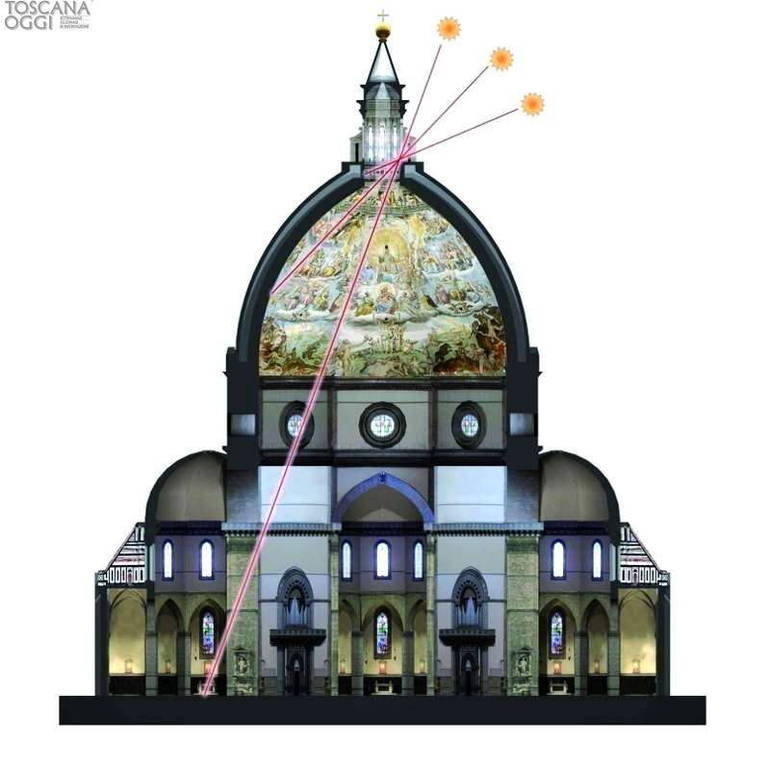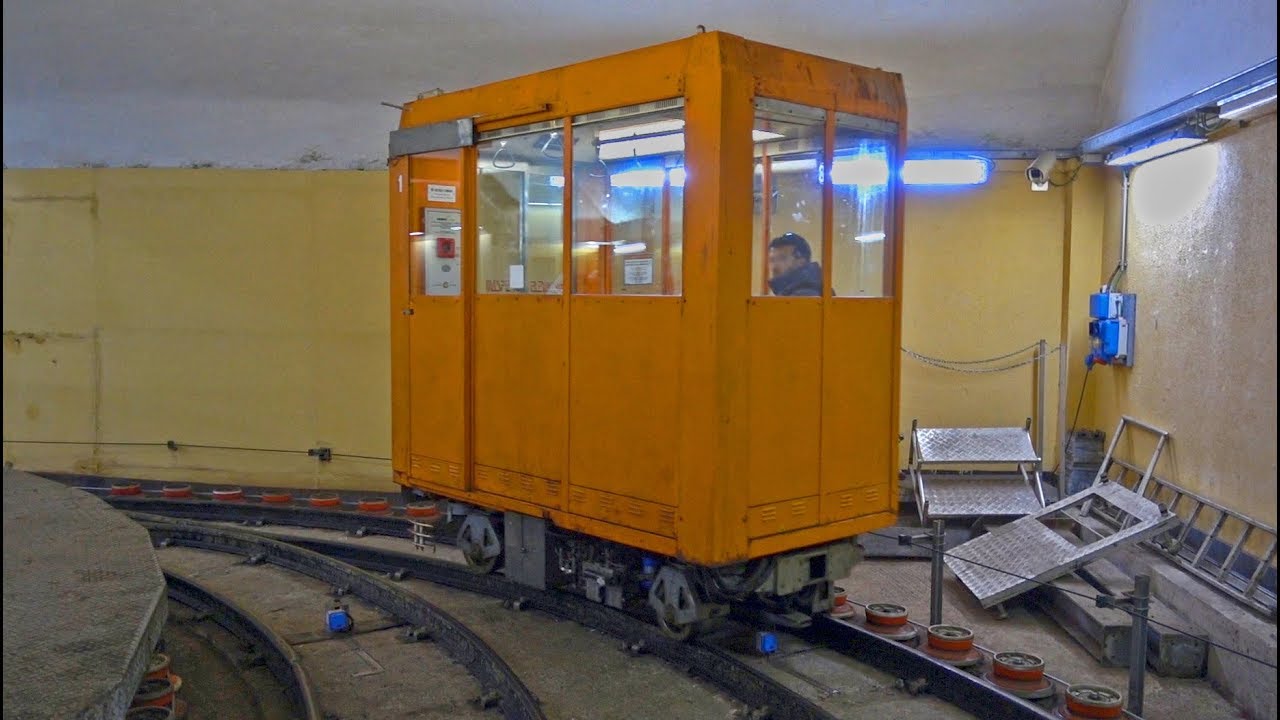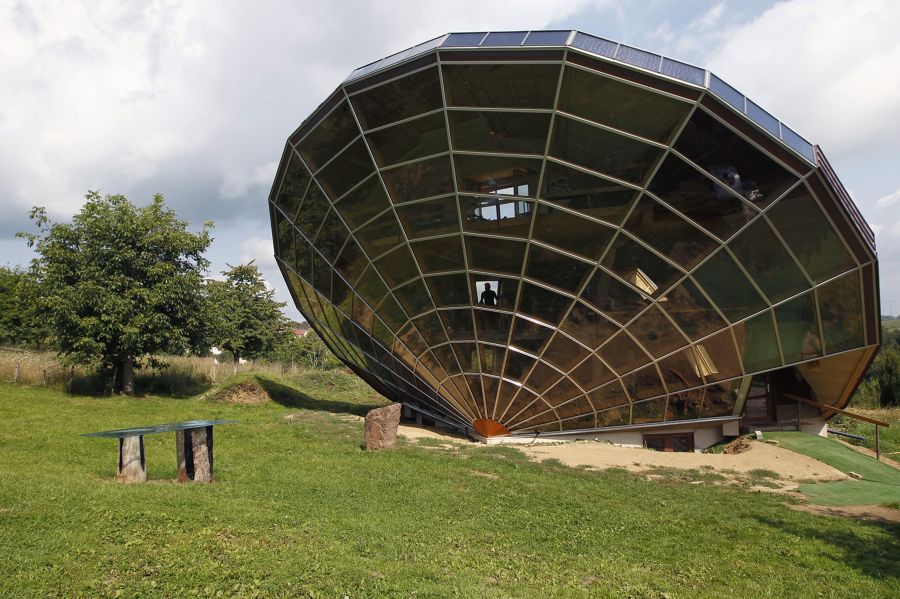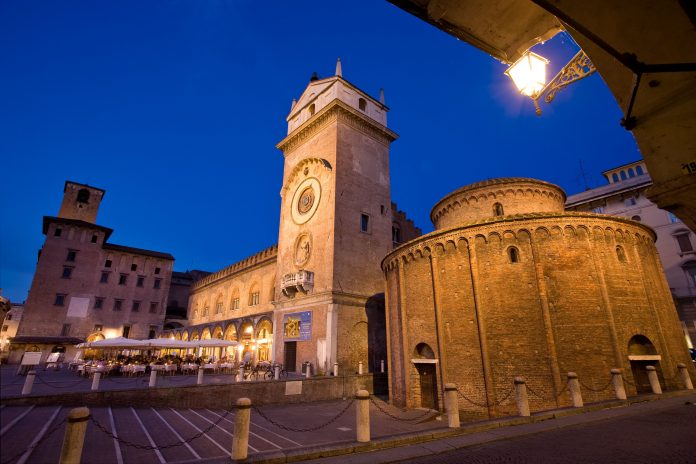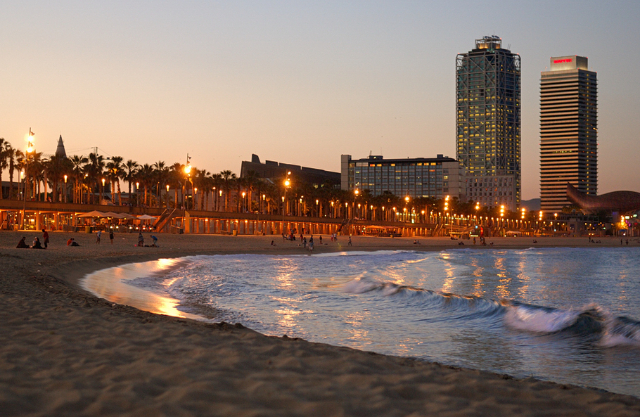The period of the Summer Solstice (around June 21 of each year) is a particularly interesting time to visit the Duomo of Florence, which in addition to extraordinary tourist attractions such as Brunelleschi’s Dome and Giotto’s Tower, can offer a unique spectacle in which the rays of the sun align, thanks to an ancient and ingenious gnomon, to a solstitial sundial identified several centuries ago with astonishing precision.One of the windows of the Dome has a small "perforated shelf" inside it, through which the sun’s rays pass during the summer solstice period. The circular beam of light is thus projected onto the floor of one of the side chapels of the Duomo, namely the so-called "Chapel of the Cross", at a time between 12 and 13 o’clock. During this time, the beam of light projected through the gnomon arrives to coincide, under the astonished gaze of hundreds of tourists rushing to watch the event, with a marble slab, also circular, which denotes the moment when the sun reaches the zenith during its celestial journey and has been in this location since 1510.The first peculiarity of the event consists precisely in the peculiar "scientific instrument" used for the astronomical observation of the summer solstice: it is in fact a sundial which, unlike those we are used to seeing, uses not the classic "rod" gnomon, but a gnomonic hole, with the consequence that the indicator projected on the sundial is not represented by a shadow line but, in fact, and on the contrary, by a circular beam of light. This particular artifice depends on the high height from which the indicator light is projected through the gnomonic hole: since the accuracy of the measurement increases with the height above the ground, the windows of the Duomo Dome are the ideal location for this type of scientific experience but, at the same time, it happens that a possible rod gnomon would cast an excessively shaded shadow on the ground, that is indefinite and therefore not able to mark anything. The use of a gnomonic hole, suitably reduced (the one in the Duomo measures about 5 centimetres), allows instead to project on the ground, according to the principle of the "pinhole", a circular beam of light with a sufficient degree of contrast with the surrounding shadow. The gnomonic hole is located in Brunelleschi’s Dome at a height of about 90 metres, which makes the gnomon of the Duomo of Florence the largest in the world. To give an idea of the colossal proportions of this gnomon, just think that the three largest after the one in Florence do not reach, even added together, the 90 meters touched in Santa Maria del Fiore.
